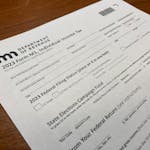Q: I received what appears to be a scam e-mail from Computer Help Security & Services. It urged me to renew my membership or call their telephone number to cancel (and thus avoid an impending $300 renewal charge to my account). I've never done business with this company, but is it possible they have my credit card number? Should I just delete the e-mail and forget it?
Jane Parry, Edina
A: It is a scam, so delete the e-mail without responding.
Here are some clues the e-mail is fake:
• You don't recall doing business with the company.
• A Google search doesn't find a company with that name.
• The company has a cheap, internet-only phone number that can't be traced to a business name or a street address. (You can check on phone numbers at whitepages.com. This one is a "non-fixed VoIP," or Voice over Internet Protocol, number.)
• The message uses scare tactics to get you to act. You're being urged to call an unknown company on the pretext of avoiding an unwanted charge to your account. Whoever answers will likely ask you for personal information, such as your bank account or credit card number.
Q: I'm unable to install the latest update for the 64-bit version of Windows 8.1. The install fails, the PC restarts, then Windows 8.1 again tries to install the update. How can I install the update?
Jane McLaughlin, Charlotte, N.C.
A: To install the August monthly update for Windows 8.1 (which contains important security improvements), you must first install a technical update that Microsoft says will "improve the reliability of the update process."
But first stop the repeating cycle of failed installations by switching the Windows update setting from "install updates automatically" to "download updates but let me choose whether to install them" (see tinyurl.com/yxgl4yut).
Once that is done, look through your list of available updates for the technical one, called KB4504418, and install it. Then scan the list again to find and install the August update, called KB4512488 (for details, see tinyurl.com/y4spct9q).
Q: I'm using the hard drive from my old Windows 7 PC as external drive "E" on my new Windows 10 PC. How can I use Windows 10 to locate the old Windows 7 "My Documents" folder? Should I erase Windows 7 from the external drive to avoid potential security problems?
Tom Olson, Golden Valley
A: You don't need to erase Windows 7 from the external disk. If it is not running, it is not vulnerable to hackers. Windows 10 will treat Windows 7 as if it were just another chunk of data.
When it comes to finding folders in Windows 7, remember that you're now looking at the operating system from the outside rather than using it. If you were using Windows 7, you'd double-click the "Libraries" folder, then "Documents," then "My Documents" to find your individual files. From outside Windows 7, you need to double-click the "users" folder, then double-click either your Windows 7 "user name" or "administrator." Then double-click "My Documents" to find your files.
E-mail tech questions to steve.j.alexander@gmail.com. Include name, city and telephone number.


